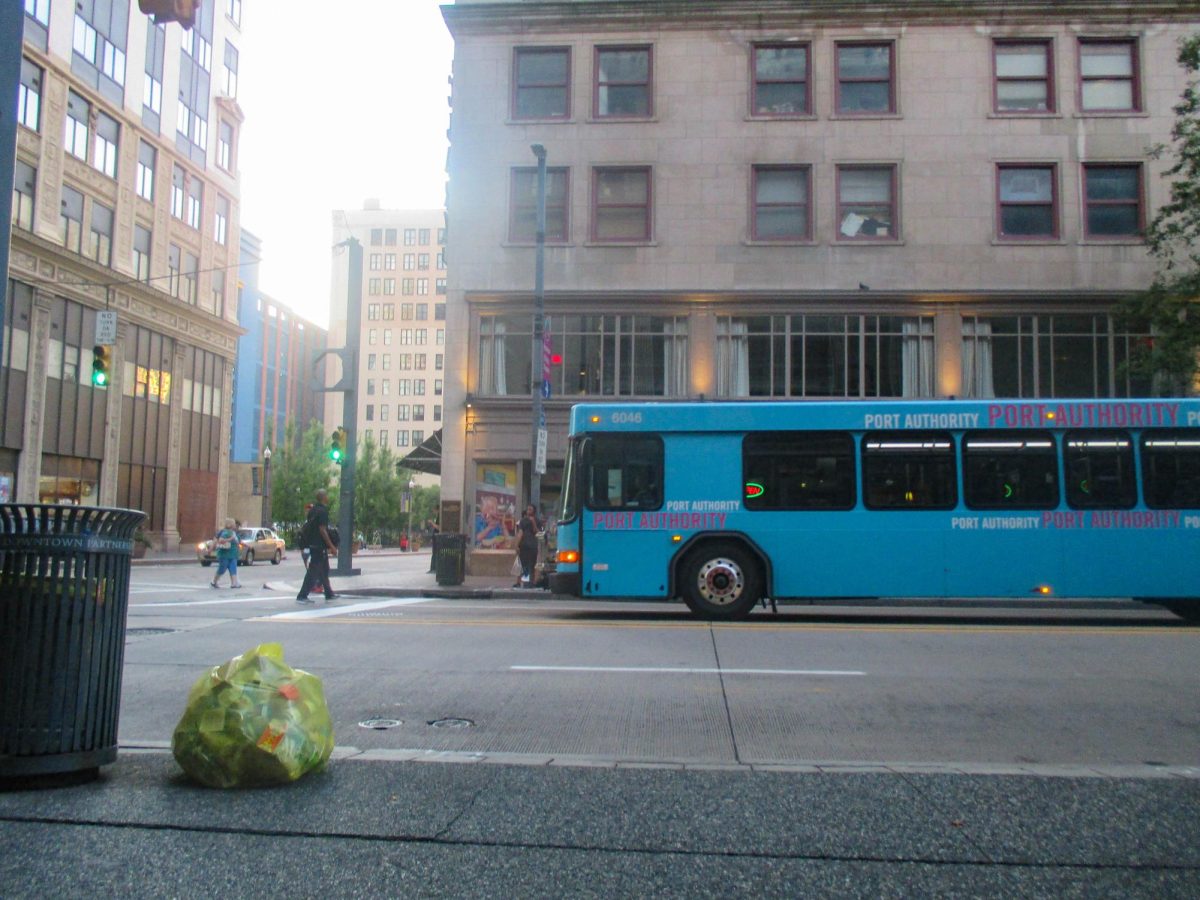
Carson Folio
A Pittsburgh Regional Transit (PRT) bus sits at the corner of Liberty Avenue and Seventh Street. Many bus routes could be cut next year.
As Pittsburgh Regional Transit’s (PRT) proposed route service cuts and fare increase moves through its board, transit riders – which include students enrolled in the U-Pass program – now have a place to voice their concerns.
PRT and its stakeholders continue to sound the alarm on what it calls a transit funding crisis. In an attempt to reduce a $100 million budget deficit, the agency has introduced a proposal that calls for at least 40 bus routes to be cut entirely and fares to be raised to $3 – one of the highest in the country.
Point Park students will likely not see the cost of the U-Pass program increase if the proposed cuts are implemented and should not expect the program to be discontinued either. If the cuts are approved, none will go into effect until February 2026.
Ross Nicotero, Amalgamated Transit Union Local 85 president, said the crisis goes beyond just numbers and dollars lost during a board meeting on March 28.
“This is about the people,” Nicotero said. “As a leader of hard-working men and women who provide the essential services to everybody in Allegheny County daily, we must work with a concerted manner to secure a reliable, dedicated source of revenue which increases with inflation.”
Despite PRT opening a public comment period on the proposal that could cause cuts and fare raises across the board, the board has not yet approved the proposal. Instead, the goal is to understand the potential impact such a plan may have on transit users, according to PRT.
To submit comments on the service cutting proposal, PRT’s website now has a link to a survey at https://engage.rideprt.org/research/comments-2026-cuts which allows anyone to submit their thoughts on the proposal. Additionally, riders can call PRT and leave a message or attend an in-person public hearing to get their voice heard.
The scheduled public hearings last from April until June but do not start until after the end of finals week. However, students who ride public transit and take classes during the summer semester can go to the April 29 hearing at the David L. Lawrence Convention Center, which is about a 15-minute walk from campus, from 9 a.m. to 1 p.m. and 3 p.m. to 7 p.m. to share their thoughts in person.
Nicotero was just one of several people who spoke at the podium during PRT’s board meeting specifically for the issue of bringing the proposal to the public comment phase. Chris Sandvig, who founded transit advocacy group Mobilify and regularly rides on bus routes that go through Downtown and could potentially be on the chopping block, said the problem goes beyond just Allegheny County.
“PRT is just the tip of the spear,” Sandvig said. “Smaller buses and paratransit systems statewide face similar fates or worse.”
Sandvig said he helped lead a coalition to spearhead Act 89 transportation funding in 2013, which he credited to saving the state’s roads and bridges. However, he said the bill had a ten-year shelf life, meaning the problem of getting enough funding for public transit agencies such as PRT did not suddenly pop up yesterday.
“It’s time for Harrisburg to put forth a real funding package, not what is essentially a one month’s allowance for one county,” Sandvig said. “Keep Pennsylvania moving for good this time.”
While Gov. Josh Shapiro has allocated $40 million to PRT to keep the transit agency from completely foundering, this still leaves a $60 million budget deficit in need of patching. This amount could grow depending on if more money is approved to go toward PRT during Pennsylvania’s summer budget sessions, but it’s unknown if this is a guarantee yet.
To submit comments on the service cutting proposal, PRT’s website now has a link to a survey at https://engage.rideprt. org/research/comments2026-cuts, which allows anyone to submit their thoughts on the proposal.
